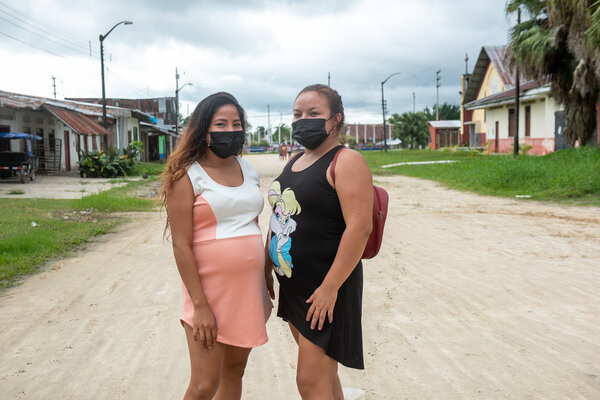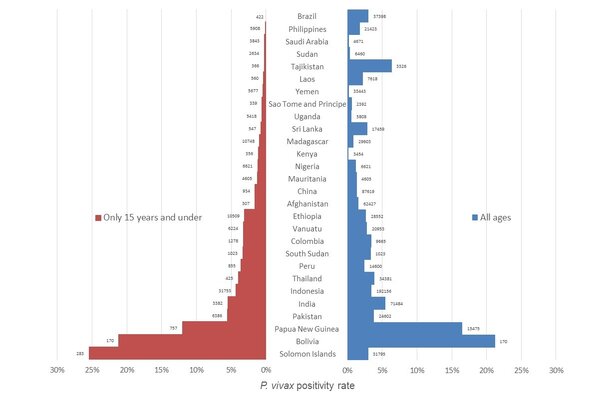P. vivax malaria in pregnant women and children
- Pregnant women and children are particularly vulnerable to death from P. vivax malaria.1
- In pregnant women, P. vivax infection, symptomatic or asymptomatic, is associated with anaemia and reduced birth weight.2
- In children, P. vivax malaria is an important risk factor for anaemia in endemic areas. P. vivax malaria appears to be associated with a greater than threefold higher attributable fraction of anaemia in infants compared with P. falciparum malaria.3
- The effect was more pronounced in children under 1 year and 1–5 years of age, whereas P. falciparum malaria had a significant effect only in children 1–5 years and 5–15 years.3
- A disproportionally high burden of P. vivax malaria was found in children under 15 years of age in Solomon Islands, Bolivia and Papua New Guinea (image below).
- While there is data on children, under 5 years of age, overall, data on children within other age groups is lacking and survey data is often not split by specific age groups or reported separately. It is, therefore, difficult to extract data only for children within a specific age bracket.

